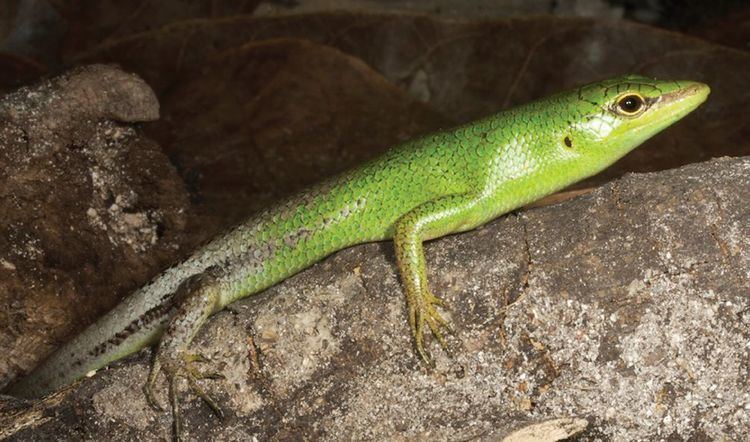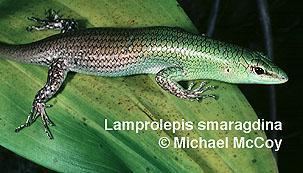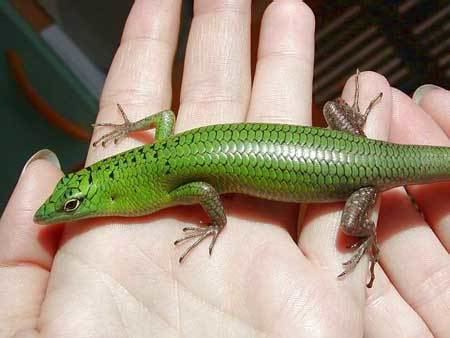Higher classification Lamprolepis | Phylum Chordata Family Scincidae Scientific name Lamprolepis smaragdina Rank Species | |
 | ||
Similar Lamprolepis, Skink, Reptile, Dasia, Lipinia | ||
Emerald tree skink lamprolepis smaragdina eating banana
The Emerald Tree Skink (Lamprolepis smaragdina), sometimes (ambiguously) known as "green tree skink" or "emerald green skink". It is a non-threatened species although it not commonly seen but it is however, becoming more and more popular in the exotic pet trade. In the Philippines, it is called Tabili in the Cebuano vernacular.
Contents
- Emerald tree skink lamprolepis smaragdina eating banana
- Emerald tree skink lamprolepis smaragdina snacking on some plum
- Geographical distribution
- Feeding habits and diet
- Habits
- Reproduction and breeding habits
- References

Emerald tree skink lamprolepis smaragdina snacking on some plum
Geographical distribution

Found in arboreal forests of Taiwan, Palawan, Luzon and Sulu archipelagoes in the Philippines, New Guinea as well as the Indo-Australian archipelago and down south to the Solomon and Santa Cruz islands.
Feeding habits and diet
It is mostly carnivorous, feeding on insects and other small creatures, although occasionally it may devour fruit and leafy plants. In some areas, it even steals dog food.
Habits
They prefer bare tree trunks without climbing plants. Several have even been sighted on minute islands with very little greenery, the record being four palm trees. It is a highly active species. Always on the move and is very squirmish, if handled. They are an unaggressive species and sometimes observed to form little groups to gang up on bigger prey.
Reproduction and breeding habits

Courtship ritual is the same as most lizards. It as an oviparous species meaning it lays eggs rather than bear live young like most members of the skink family do. Eggs are usually laid in clusters of two. They can be easily bred in captivity and may live an average 7–12 years in captivity.

